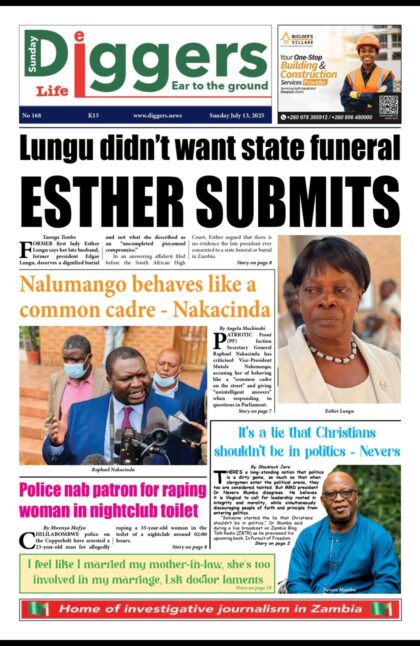ZAMBIA’S external public debt, along with the country’s major commodity prices, have more than doubled since 2015 when President Edgar Lungu first assumed office in January.
Analysis of data from February, 2015 after the Presidential by-election, shows that fuel and mealie meal prices more than doubled to well over 100 per cent, while the kwacha’s performance against major currency convertibles has significantly depreciated to its all-time worst of above K15 per dollar compared to just K6.54 per dollar in February, 2015, according to the Bank of Zambia (BoZ), less than one month after President Lungu was first sworn into office.
Five years later, the kwacha breached the K15.00 per dollar psychological barrier for the second time in Zambia’s history, owing to a sustained high demand for the greenback on the local market, compounded with little supply.
The local currency’s sustained depreciation came in the wake of expensive electricity and fertilizer imports into the country last November, expected to be ongoing in the short-term future.
A 25Kg breakfast mealie-meal bag was an average K70.00 at a time when the Food Reserve Agency’s (FRA) maize purchase price was at between K78-K80 per 50Kg bag, but prices of the commodity have more than doubled to a national average of K162.30 as at February, 2020, Zambia Statistics Agency (ZSA) data shows.
The more than 100 per cent increase in mealie meal prices corresponds with the FRA’s higher maize purchase price set at K110 per 50Kg bag of maize last July.
The Energy Regulation Board (ERB) had marginally adjusted fuel prices to K8.74 per litre of petrol up from K7.60; K7.59 from K6.59 for diesel and K5.40 from K4.69 for kerosene, respectively, effective, May, 2015.
But prices for the same commodities now stand at an unprecedented K17.62 per litre of petrol; K15.59 and K15.39 per litre of diesel and kerosene respectively adjusted last December.
And on the country’s annual rate of inflation, President Lungu took over office with Zambia’s inflation at 7.7 per cent in January, 2015, compared to nearly double the rate it was of 12.5 per cent in January, this year, before sliding further to an over-three year high of 13.9 per cent last month.
From 2015, Zambia has experienced its highest-ever annual rate of inflation of a staggering 22.9 per cent in February, 2016, on account of continued price hikes in essential food and non-food items, ZSA data reveals.
That same year, the ZSA, previously known as the Central Statistics Office (CSO), explained that of the total 22.9 per cent annual inflation rate recorded in February, 2016, food and non-alcoholic beverage products accounted for 13.7 percentage points, while non-food products accounted for 9.2 percentage points.
The Zambian economy was also reeling from a severe power shortage and volatile exchange rate a few months earlier.
Meanwhile, while the country’s external debt previously stood at around US $4.8 billion by mid-2015, this has now jumped to US $11.2 billion as at December 31, 2019, according to Ministry of Finance (MoF) data.
The effects of the increased external debt levels are expected to squeeze social sector spending this year, according to analysts, while government grapples with flooding disasters in various parts of the country, which resulted in public funds being diverted away from civil servants’ salaries.



















